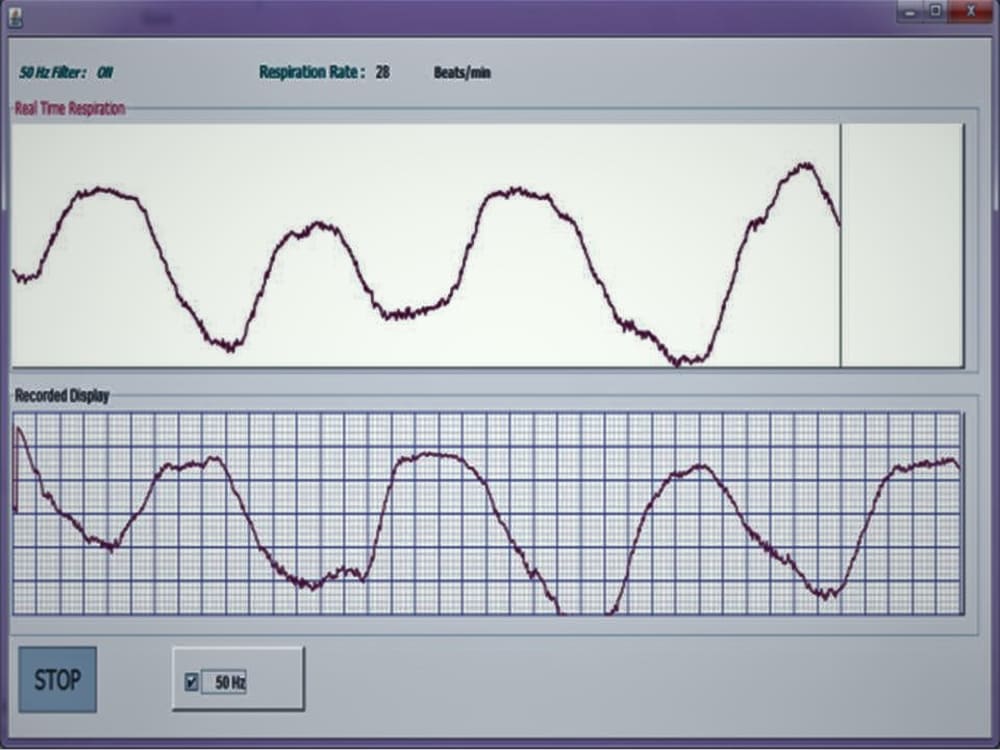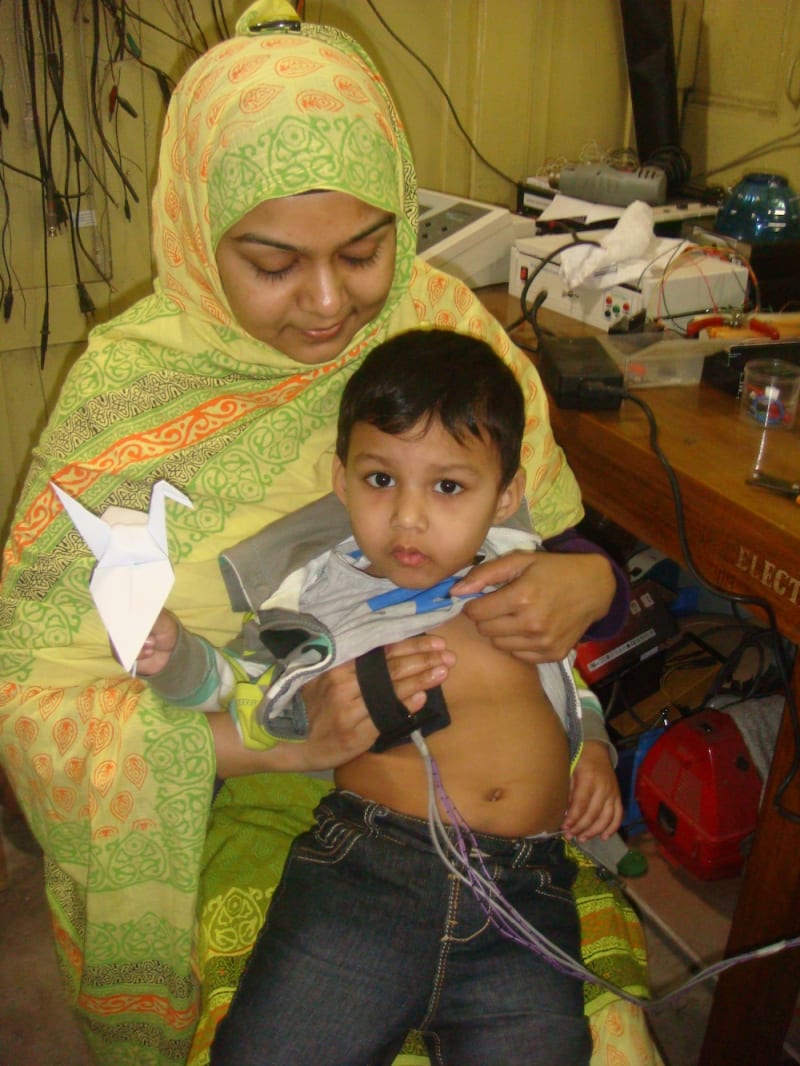
Body tissues have electrical properties that make them amenable to evaluation using electrical impedance techniques. However, electrical current spreads in all directions in 3D volumes and hence is difficult to target a single organ or region. 'Focused Impedance method (FIM)’ is an innovation of the author’s group which uses basic tetrapolar electrical impedance technique and sums the measured impedance in two orthogonal directions centred over the target zone, giving enhanced sensitivity in the centre. Due to 3D sensitivity, FIM can give information of body tissues under the skin at shallow depths using hand held probes. Probing organs at deeper regions may be possible through suitable placement of electrodes around the body segment in question. Although its attraction is in probing body organs non-invasively, invasive procedures may be possible for specialized investigations.
An important and successful application of FIM is in the localized measurement or monitoring of lung ventilation using a hand held probe with 4 electrodes as shown in Figure 1. Inhaled air in the alveoli increases the gross electrical impedance of the lungs which is detectable using FIM (Figure 2). If there is a reduction of inhaled air compared to normal it may be possible to detect the abnormality with appropriate placement of electrodes. Respiratory diseases are still prevalent in the low resource countries making this device a potentially important diagnostic tool.
Pneumonia is still a major killer of children in rural areas of low resource countries which is difficult to diagnose in the absence of X-ray and other modern facilities. Besides, most of these places do not have qualified doctors, therefore either automated devices or telemedicine may provide possible solutions. Respiration rate provides a major diagnostic information in Pneumonia but children start crying whenever some instruments are attached to the body for acquiring data for telemedicine, and crying changes respiration rate. We simply made a palm worn electrode pad using which a mother touches the baby or the child (Figure 3) and the respiration changes are monitored without the baby crying. It has been tested successfully on several babies and children.
FIM may be useful for monitoring of artificial respiration in hospitals, particularly useful during anaesthasia procedures. Besides, FIM has been tested successfully in stomach emptying studies and is being studied to characterize breast tumours – whether malignant or benign, as an alternative to invasive biopsy. A host of other applications in medicine may be possible with further research including monitoring of cancer cell destruction in irreversible electroporation. It may have applications in industry, agriculture, oceanography, geology and mining too.
The instrumentation is mainly electronic and amenable to large scale manufacture at low cost. Besides, consumable cost is virtually zero. Models have been developed with or without the need of a computer. Therefore FIM appears to be a technology of future providing solutions in different useful areas of human activity and has a large global market. For the benefit of the global humanity, we have published the technique and are not going to apply for patents.
-
Awards
-
 2017 Top 100 Entries
2017 Top 100 Entries
Like this entry?
-
About the Entrant
- Name:K Siddique E Rabbani
- Type of entry:teamTeam members:Muhammad Abdul Kadir, Kamrul Hussain, Abdullah Al Amin, A K M Bodiuzzaman, Ahmad Imtiaz Khan, Mohammad Moniruzzaman
- Software used for this entry:COMSOL Multiphysics
- Patent status:none








